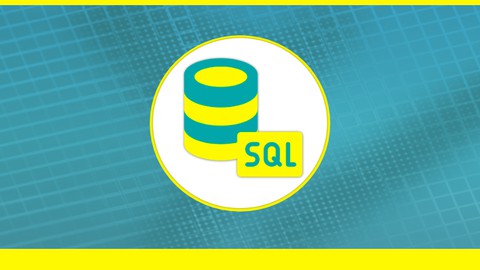
Learn Open SQL in New SAPⓇ ABAPⓇ 7.4x and 7.5x
Learn Open SQL in New SAPⓇ ABAPⓇ 7.4x and 7.5x, available at $19.99, has an average rating of 4.45, with 36 lectures, based on 14 reviews, and has 345 subscribers.
You will learn about You will learn the use of Open SQL with New ABAP® 7.4x and 7.5x on HANA® using Eclipse with ADT Plugins The course will start from the basic theory of Open SQL vs Native SQL in SAP® and basic use of Select, Insert, Update, Modify and Delete with examples You will learn the use of UPTO ROWS, Where and Complex WHERE, Custom Structure, Mapping Columns, Wildcards, Select in Timestamp, use of IN and RANGE Table You will learn the use of CORRESPONDING FIELDS OF TABLE, making Selection Dynamic or Generic and use of FOR ALL ENTRIES You will learn the use of Aggregation: COUNT, DISTINCT, MAX, MIN, SUM, AVG GROUP BY and ORDER BY You will learn the use of Select with Subquery and Insert with Subquery, INNER, LEFT, RIGHT and CROSS JOIN You will learn the use of Arithmetic SQL Expressions of: +, -, *, CAST, DIVISION, CEIL, FLOOR and ROUND You will learn COALESCE and SQL String Expressions of: UPPER, LOWER, LENGTH, SUBSTRING, REPLACE, LPAD, RPAD, &&, CASE, CONCAT and CONCAT_WITH_SPACE You will learn the use of Selection using CDS views and Path Expression At the End of the course, you will also learn the performance consideration aspect of queries and Open SQL Code This course is ideal for individuals who are SAP® Developers, SAP® Technical, Techno-Functional Consultants and Managers It is particularly useful for SAP® Developers, SAP® Technical, Techno-Functional Consultants and Managers.
Enroll now: Learn Open SQL in New SAPⓇ ABAPⓇ 7.4x and 7.5x
Summary
Title: Learn Open SQL in New SAPⓇ ABAPⓇ 7.4x and 7.5x
Price: $19.99
Average Rating: 4.45
Number of Lectures: 36
Number of Published Lectures: 36
Number of Curriculum Items: 36
Number of Published Curriculum Objects: 36
Original Price: $199.99
Quality Status: approved
Status: Live
What You Will Learn
- You will learn the use of Open SQL with New ABAP® 7.4x and 7.5x on HANA® using Eclipse with ADT Plugins
- The course will start from the basic theory of Open SQL vs Native SQL in SAP® and basic use of Select, Insert, Update, Modify and Delete with examples
- You will learn the use of UPTO ROWS, Where and Complex WHERE, Custom Structure, Mapping Columns, Wildcards, Select in Timestamp, use of IN and RANGE Table
- You will learn the use of CORRESPONDING FIELDS OF TABLE, making Selection Dynamic or Generic and use of FOR ALL ENTRIES
- You will learn the use of Aggregation: COUNT, DISTINCT, MAX, MIN, SUM, AVG GROUP BY and ORDER BY
- You will learn the use of Select with Subquery and Insert with Subquery, INNER, LEFT, RIGHT and CROSS JOIN
- You will learn the use of Arithmetic SQL Expressions of: +, -, *, CAST, DIVISION, CEIL, FLOOR and ROUND
- You will learn COALESCE and SQL String Expressions of: UPPER, LOWER, LENGTH, SUBSTRING, REPLACE, LPAD, RPAD, &&, CASE, CONCAT and CONCAT_WITH_SPACE
- You will learn the use of Selection using CDS views and Path Expression
- At the End of the course, you will also learn the performance consideration aspect of queries and Open SQL Code
Who Should Attend
- SAP® Developers, SAP® Technical, Techno-Functional Consultants and Managers
Target Audiences
- SAP® Developers, SAP® Technical, Techno-Functional Consultants and Managers
-
You will learn the use of Open SQL with ABAP with features of Select, Insert, Update, Modify and Delete with SAPⓇ HANAⓇ using Eclipse with ADT
-
You will see the new Open SQL syntaxes and features available since 7.4x and 7.5x of ABAP Language
-
Start with the Theory of Open SQL Execution Architecture and the Difference between Open SQL vs Native SQL
-
Basic usage of Select, Insert, Update, Modify and Delete with examples
-
Use of Select-Endselect, Packet Size and where to use what
-
Use of INTO and APPEND in Select
-
Use of Basic WHERE Clause, UPTO ROWS, SINGLE, SY-DBCNT and SY-SUBRC and Exceptions
-
Simple and Complex WHERE with AND, OR and Parenthesis Control, etc.
-
How to Use Select in Timestamp Comparison
-
Use of BETWEEN, IN and RANGE Tables
-
Get data in Custom Structure, Mapping Columns, Wildcards etc.
-
Use of CORRESPONDING FIELDS OF TABLE, making Selection Dynamic or Generic and use of FOR ALL ENTRIES
-
Use of Aggregation: COUNT, DISTINCT, MAX, MIN, SUM, AVG etc.
-
Use of GROUP BY and ORDER BY
-
Use of Select with Subquery and Insert with Subquery
-
Use of Joins with Theory and Hands-on with INNER, LEFT, RIGHT and CROSS JOIN
-
Use of Arithmetic SQL Expressions, String SQL Expressions, CASE and COALESCE
-
Selection using CDS views and Path Expression
Course Curriculum
Chapter 1: Introduction of the Course
Lecture 1: Introduction to Open SQL in New ABAP® on HANA® Course
Lecture 2: Introduction to the Course
Lecture 3: Codes and Snippets Examples
Chapter 2: Open SQL in ABAP® – Open SQL vs Native SQL in ABAP® and Basic Select Statements
Lecture 1: Open SQL Basic – Open SQL Architecture Overview and Open SQL vs Native SQL
Lecture 2: Open SQL Basic – Setting up Sample Tables for Hands-on
Lecture 3: Open SQL Basic – Usage with Inline Table, UP TO and Extracting Selective Columns
Lecture 4: Open SQL Basic – Use of Select-Endselect and Append to Internal Table
Chapter 3: Open SQL Basic – Insert, Update, Modify and Delete in Open SQL
Lecture 1: Open SQL in ABAP® – Insert in Open SQL with Inline and Internal Table Syntax
Lecture 2: Open SQL in ABAP® – Update in Open SQL Using Line, Table and Inline Syntax
Lecture 3: Open SQL in ABAP® – Update Using SET Keyword and Making it Dynamic
Lecture 4: Open SQL in ABAP® – Use of Modify in Open SQL
Lecture 5: Open SQL in ABAP® – Delete Using Where and Internal Table in Open SQL
Lecture 6: Open SQL in ABAP® – Summary of the Section and Future Pointers
Chapter 4: Open SQL Intermediate – Use of CORRESPONDING FIELDS OF TABLE and FOR ALL ENTRIES
Lecture 1: Open SQL Intermediate – Use of CORRESPONDING FIELDS OF TABLE
Lecture 2: Open SQL Intermediate – Making Selection Dynamic/Generic
Lecture 3: Open SQL Intermediate – Use of FOR ALL ENTRIES
Chapter 5: Open SQL Intermediate – Use of Aggregation, Group By, Order By and Subqueries
Lecture 1: Open SQL Intermediate – Use of Wildcards _ and %
Lecture 2: Open SQL Intermediate – Use of Aggregation Functions
Lecture 3: Open SQL Intermediate – Use of Group by, Order by with Aggregation Functions
Lecture 4: Open SQL Intermediate – Use of Subqueries with Select
Lecture 5: Open SQL Intermediate – Use of Try-Catch with SQL Queries
Lecture 6: Open SQL Intermediate – Use of Subqueries and Exists
Lecture 7: Open SQL Intermediate – Use of Insert with Subqueries
Chapter 6: Open SQL Advanced – Use of Joins Inner, Left Outer, Right Outer and Cross Joins
Lecture 1: Open SQL Advanced – Explanations of Types of Joins with Examples
Lecture 2: Open SQL Advanced – Use of Inner Joins
Lecture 3: Open SQL Advanced – Use of Left Outer Joins with Right Outer Joins
Lecture 4: Open SQL Advanced – Use of Cross Joins
Lecture 5: Open SQL Advanced – Union with Select
Chapter 7: Open SQL Advanced – String Expressions, Arithmetic Expressions, CASE & Coalesce
Lecture 1: Open SQL Advanced – SQL Expressions and Usage Theory
Lecture 2: Open SQL Advanced – Use of Arithmetic SQL Expressions – Part 1
Lecture 3: Open SQL Advanced – Use of Arithmetic SQL Expressions – Part 2
Lecture 4: Open SQL Advanced – Use of String SQL Expressions
Lecture 5: Open SQL Advanced – Use of CASE and Coalesce
Chapter 8: Open SQL Advanced – Path Expression, Performance and Best Practices
Lecture 1: Open SQL Advanced – Path Expression in ABAP® Open SQL
Lecture 2: Open SQL Advanced – SQL Execution Time and Trace
Lecture 3: Open SQL Advanced – Performance in ABAP® Open SQL
Instructors
-
UI5 Community Network
Experts in Services, Consulting and Education
Rating Distribution
- 1 stars: 0 votes
- 2 stars: 0 votes
- 3 stars: 0 votes
- 4 stars: 7 votes
- 5 stars: 7 votes
Frequently Asked Questions
How long do I have access to the course materials?
You can view and review the lecture materials indefinitely, like an on-demand channel.
Can I take my courses with me wherever I go?
Definitely! If you have an internet connection, courses on Udemy are available on any device at any time. If you don’t have an internet connection, some instructors also let their students download course lectures. That’s up to the instructor though, so make sure you get on their good side!
You may also like
- Best Emotional Intelligence Courses to Learn in March 2025
- Best Time Management Courses to Learn in March 2025
- Best Remote Work Strategies Courses to Learn in March 2025
- Best Freelancing Courses to Learn in March 2025
- Best E-commerce Strategies Courses to Learn in March 2025
- Best Personal Branding Courses to Learn in March 2025
- Best Stock Market Trading Courses to Learn in March 2025
- Best Real Estate Investing Courses to Learn in March 2025
- Best Financial Technology Courses to Learn in March 2025
- Best Agile Methodologies Courses to Learn in March 2025
- Best Project Management Courses to Learn in March 2025
- Best Leadership Skills Courses to Learn in March 2025
- Best Public Speaking Courses to Learn in March 2025
- Best Affiliate Marketing Courses to Learn in March 2025
- Best Email Marketing Courses to Learn in March 2025
- Best Social Media Management Courses to Learn in March 2025
- Best SEO Optimization Courses to Learn in March 2025
- Best Content Creation Courses to Learn in March 2025
- Best Game Development Courses to Learn in March 2025
- Best Software Testing Courses to Learn in March 2025






















